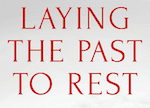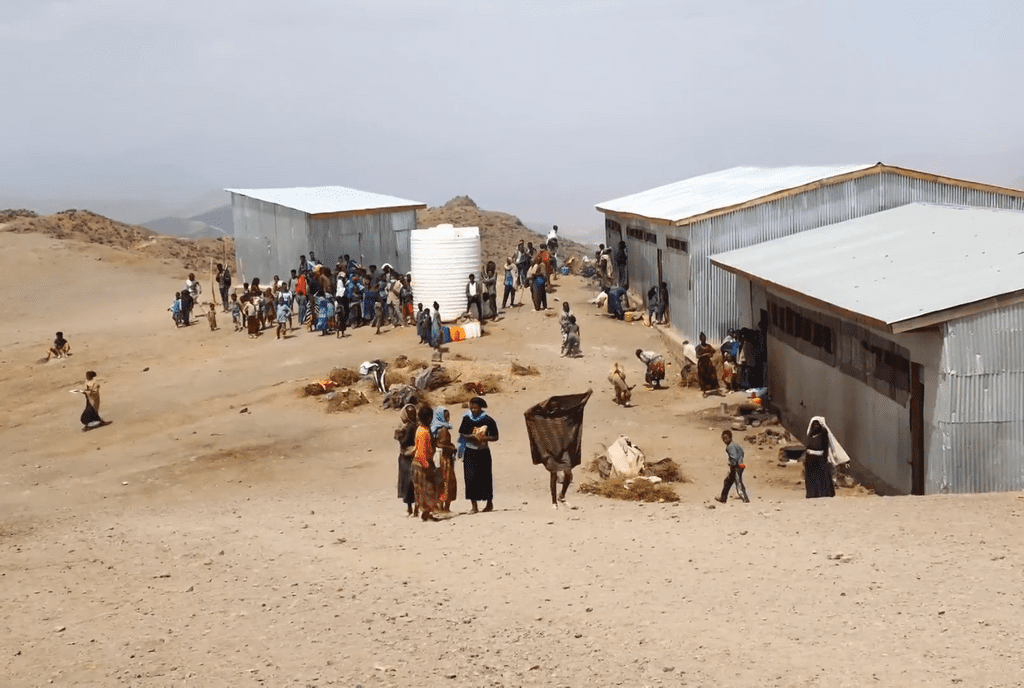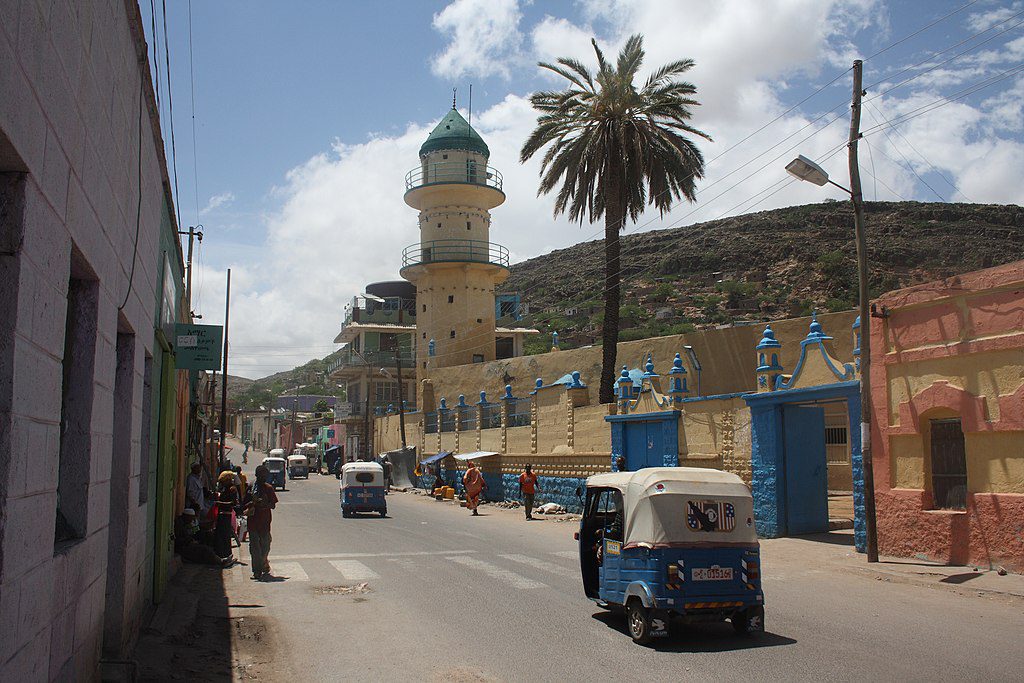 Review of ‘Laying the Past to Rest’ -The EPRDF and the Challenges of Ethiopian State Building by Mulugeta Gebrehiwot Berhe (PhD) Hurst & Company, London, 2019. 376 pages, £55, and ISBN No. 9781787382916
Review of ‘Laying the Past to Rest’ -The EPRDF and the Challenges of Ethiopian State Building by Mulugeta Gebrehiwot Berhe (PhD) Hurst & Company, London, 2019. 376 pages, £55, and ISBN No. 9781787382916
This book deserves to be a reference book for everyone interested in the history of TPLF/EPRDF in Ethiopia, the front which ruled the country for the last 27 or so years. The author has contributed a highly useful and relevant intellectual work through a book recently released under the title “Laying the Past to Rest”. The book analyzes the 17 years of TPLF/EPRDF armed struggle and the front’s overall performance as a ruling party which ran the country for nearly three decades. He deftly narrates the motives of and inspiration for the rebellion through a distinctly crisp and alluring language, sparing his readers from the often trying long prose of academic writing. As a genre, it has elements of history and memoir. In terms of subject matter, it is essentially a book on leadership, organizational behavior and rebellion, grounded specifically on experiences of the TPLF/EPRDF. Most importantly, the book is an empirically robust, well-grounded, and careful analysis of key incidents and accidents using probing approaches of a seasoned researcher. Robustness is also lent to it through the vast literature and primary sources consulted by the author in writing this book.
As such, the author may not have provided a great deal of new information about the organization to one who is well informed about the history of TPLF/EPRDF. But, one of the strengths of the book is that the author weaves recognizable stories and analyzes them step-by-step to draw key conclusions about these stories, which I find to be refreshingly original.
The first-hand stories which the author recounts using his well-honed skill in an interesting manner are really thrilling. Based on these and the organizational model he introduces at the beginning, the author arrives at some powerful conclusions and findings, that could be pursued as research topics in and of themselves.
As a work of research, the author imparts his own contribution to the existing body of knowledge and current debate around the topic. The foundational premise must have helped in this respect. In connection to this, the preamble emphasizes that such movements should never be bundled into simplistic nomenclatures. Their performance should also be measured ‘on their accounts’ based on their respective contexts. According to the author, each movement is unique in both what it seeks to achieve and the manner of doing that. As he sets out to do, he succeeds to show that the struggle of the TPLF/EPRDF is unique. It is unique because, among others, it is not sponsored by any outside force, and, equally, because its founders had very little prior experience of politics except as members of a student movement.
The author’s objectives in writing the book could be distilled into two. He tries to provide a “panoramic view on the genesis, successes and challenges of the TPLF/EPRDF” in the field. He also attempts to assess the same criteria in regard to state building after military victory. To logically link the armed struggle with the state building project up to 2012 is also an important undertaking of the book, if an offshoot of these two objectives.
Under the first objective, the writer gives a lucid account of the 17 years of armed struggle of the TPLF/EPRDF. Key success factors are identified, synthesized, and relevant and cogent conclusions are drawn. The real reasons for the success of the armed struggle of the TPLF/EPRDF — when other rebellions in Ethiopia with superior capacity and outside support have failed — has been well articulated. For that, he gives credit to the state-like administration of liberated areas, the intellectual energy and a ‘culture of theorization’ of the leaders, the continuous cultivation of the art of war, the relatively inclusive and egalitarian style of leadership, and the conscious decision to co-opt or establish other liberation fronts from the other parts of the nation. What stands out under this is a refreshing concept he calls ‘stateness’. In this, he stresses that the TPLF, during the armed struggle, acted with a strong sense of a statehood, and acted like administering a state. This prepared it well for the successful transition from a state of dilapidation of the final days of the Derg to a reasonably well-functioning state with a delivery of basic services to citizens.
I believe that, in addition to enriching the otherwise scant literature on the TPLF/EPRDF, the author, by writing this book, has extended the scope of intellectual discourse about TPLF/EPRDF and all liberation movements and pitfalls while in government, in general.
Remaining detached emotionally from the stories the author recounts in the book in order to avoid possible personal biases of his own is, I guess, another strong point of the book. The reader is likely to surmise that, given the fact that the author was in the front, it must have been challenging for him to compartmentalize personal emotions for the very movement he was very much a part of. We know he was an active participant of specific events that he discusses in the book and one is likely to assume it would be easy to succumb to being sentimental about the front. Nonetheless, in the reviewer’s assessment, the writer has succeeded in being objective, regardless.
Three things must have helped him to remain objective and ethical, which adds to the book’s readability. First, the writer consistently hides his persona and views, except in two instances, counter to his intimacy and knowledge of events. Apparently, he uses his own experience only to triangulate facts secured from different sources. Second, he rarely mentions his comrades-turned-officials by name, whom he uses as primary sources. Third, he does not attribute specific actions taken or decisions made by the TPLF/EPRDF to names in the leadership, unless necessary, where even so he uses generic titles such as “a senior commander”. In addition to ensuring loyalty to his respondents, this approach could help the reader focus on the topic or issue rather than on the persona. If not for that, readers could easily fleet to judging the individual disregarding the substance. While discussing the genesis of the organization, Mulugeta, as opposed to mainstream political analysts, maintains that the TPLF had not initiated an armed struggle to meet narrow nationalist agenda and achieve the independence of Tigray. On the contrary, the author argues that the TPLF tasked itself with bringing about a reconstituted Ethiopia underpinned by equality of cultures. He tries to rebut, if not head-on, the thinking of some commentators that the founders of the TPLF would in any way wage an armed resistance against the Derg. According to these commentators, no matter how democratic or repressive the Derg military regime may have turned out be, the founders had made up their minds and would have found themselves in Dedbit, Western Tigray, anyway. Like Gebru Asrat ex-senior member of TPLF/EPRDF and Gidey Zereatsion, also a senior member of TPLF purged out over disagreement in the earliest days of the TPLF, who also contributed books, Mulugeta believes that there were already genuine and justified reasons for the armed struggle to start.
The inferences about the armed struggle are very helpful for understanding state building under the TPLF/EPRDF. Once the reader has perused the first chapters, he is groomed for the later discussion in the book about state building. For instance, a reader is better prepared to understand (or even sympathize with) why the TPLF/EPRDF failed in bringing about democratic governance beyond what is procedural, such as logistically sound election.
As far as the state building and the later days of the EPRDF is concerned, the three goals of the organization that the author has teased out, come out clearly. These are: 1) building a multi-national federal system that gives high regard to equality of cultures and administration along cultural/linguistic divides, 2) accelerating economic growth and reducing poverty, and 3) building a democratic society enabled by democratic institutions. From the above three, according to the author, while building multi-national federation is more or less a success story, except for the deepening administrative nationalism, ensuring economic growth and reducing poverty is almost unqualified success. In democracy, the TPLF/EPRDF did not do so well, according to him,
On the other hand, as a unique contribution, the author gives apt illustrations on how the deep-seated organizational cultures and ideological fixations of the armed struggle have persistently haunted the organization, negatively affected the process of state building, and caused the failure in fostering democracy. From the book, one gets the idea that the dichotomous categorization of enemy versus friend, the strong emphasis on secrecy over transparency, and the highly centralized approach to leadership are some of the inheritances from the armed struggle spilling over to formal administration post-military victory. Equally, one discerns from the book the complexities of the organization through paradoxes of flexibility within rigidity, secretiveness within open relationship, bad blood within camaraderie and ethno-centrism within a sense of national responsibility and historical obligation.
To use a literary technique, the decline of the EPRDF as a political organization is sufficiently ‘foreshadowed’ in the book. One observes that it is almost a self-validated truth that the decline of the TPLF/EPRDF as a relevant political organization would eventually transpire. Given what was taking place to ‘fuse the party into the state’, the consolidation of power by the executive, and the nominalism of democratic institutions, the fall of the party was almost bound to come even though the writer did not put it in specific terms.
Given the scale and breadth of the 17-year armed struggle and the tasking task of state building, no diligent writer could ever attempt to cover the topic with enough details. This author has almost done this, except in certain instances where he consciously or unconsciously glosses over or sidelines certain facts. In particular, he fails to discuss the role of women in the struggle and the political objective to emancipate them, which many consider as one of the important factors for TPLF’s success. The able articulation by the TPLF of women’s oppression, including through entrancing songs, provided a compelling cause for tens of thousands of rural girls to join it and take up arms. Besides, women played a critical role in the supply of logistics and actively participated in sustaining the war economy. This subject has not been discussed in the book.
A reader with a limited information/knowledge of the subject under discussion could be led to believe that the TPLF always received unqualified support from all segments of the society, which was not the case. It is a common knowledge that, in the earlier years of the armed struggle, the TPLF had to defend itself for survival from hostile local forces who rallied around the Derg. To name them, there were white-clothed militias (Nech Lebash), political cadres of the military regime, youth vigilante groups, and counter-insurgency forces constituted by former TPLF combatants. Moreover, those with a high regard for state authority were initially skeptical about the cause of the TPLF combatants and never believed this group of youngsters could ever succeed, either.
This is not meant to debase, however, the validity of the author’s recollections, such as the euphemistic term “saintly” given by peasants to TPLF combatants. This and similar terms are only fitting given the combatants’ high code of conduct, selflessness, and the respect they had for the property and the person of the peasant and family.
In the book, there is very little discussion about human right breaches believed to have taken place in rural Tigray during the struggle period. Contrary to the high discipline of the ordinary fighter, absence of due process of law, even by the standard of the time, were witnessed. This reportedly has claimed the lives of innocent people. Despite its significance, the author, intentionally or for its sensitive nature, minimally discusses this subject. The part of the book (just a page: p. 74) where he writes about the aspect of the administration of liberated areas discusses the subject only in the context of 06 department. The largely infamous Bado Shidishte (Zero six) was like a security wing of the front and administered prisons with prisoners in its custody. On the other hand, the writer is courageous enough to discuss instances of ruthless action against individuals and/or groups of fighters within the organization. In particular, he brings out a vivid yet harrowing story that took place at a place called Amentila in Eastern Tigray preceding (and as a triggering factor) the 1977 crisis or the hinfishfish as is commonly known.
Given the author’s power of analysis and perceived high sense of objectivity, he could have carried out a deeper analysis of the successes and underlying flaws of the current federal system that is based on linguistic and cultural identities. He falls short of debunking serious arguments against the existing federal system to be divisive and corrosive of nationalism.
Finally, it should be noted that dates of events and incidents are mistakenly stated. One wonders how such mistakes could have crept into the writing given the general high-level accuracy of the book. As a limiting factor, the fact that the book is written in English may well impair its accessibility to vast number of Ethiopian readers. One wishes that it will soon be translated into Amharic and other major Ethiopian languages.
Overall, the book is anything but ordinary, offering the reader incisive insight and sound arguments. It sets out to achieve clearly delineated objectives, putting the writer out on his limb for the readers’ verdict. For me, as a reader, the verdict is given. The objectives of the book are clearly articulated and are met beyond doubt. Since I thoroughly enjoyed reading the book, I would like to encourage others to read it as well. It is a highly illuminating book, filling a serious gap in the discourse about the TPLF/EPRDF.
Teshome Beyene Berhe is a development consultant for the last 9 years accomplishing a number of assignments in private sector development, policy evaluation and partnership building for the World Bank, African Development Bank, UNCTAD and others. By training, he is an economist, and has a strong interest in business law and organizational development. Previously, he was head of the Trade Bureau of Tigray region in Ethiopia, and Secretary General of the Metropolitan Chamber of Commerce of Addis Ababa. He is a founder and former board chair of Ethio Life and General Insurance Company in Ethiopia.



